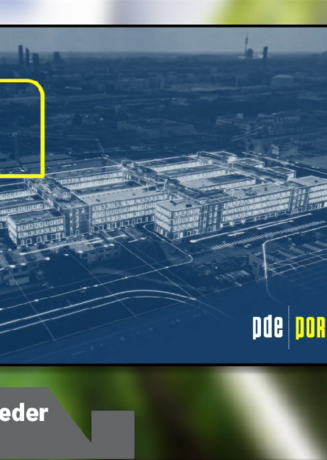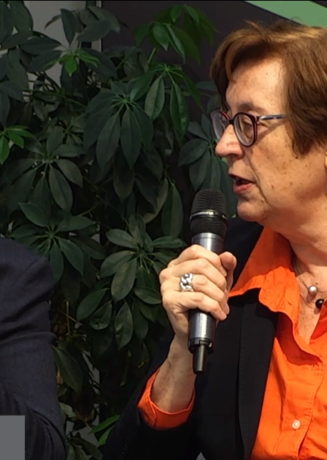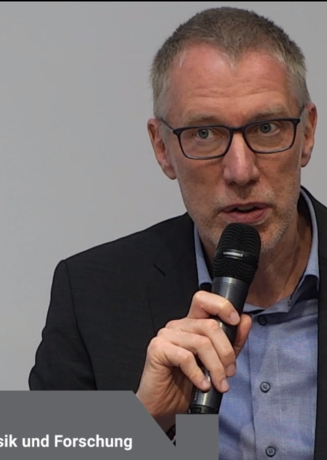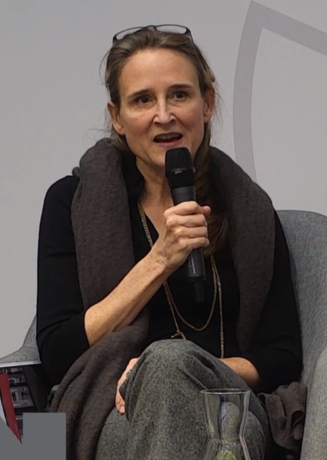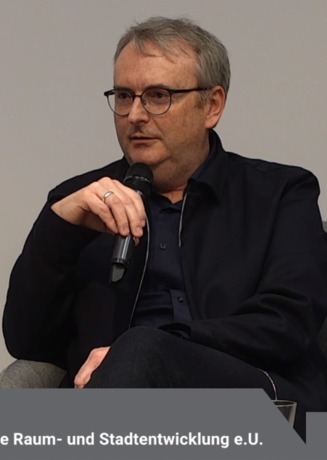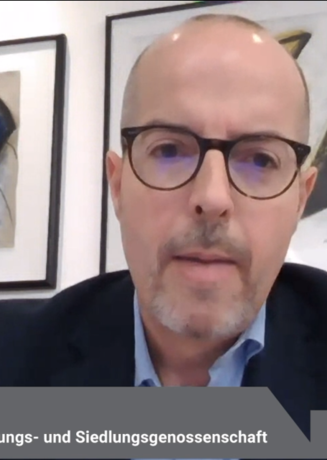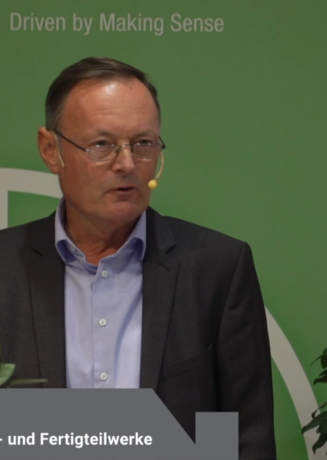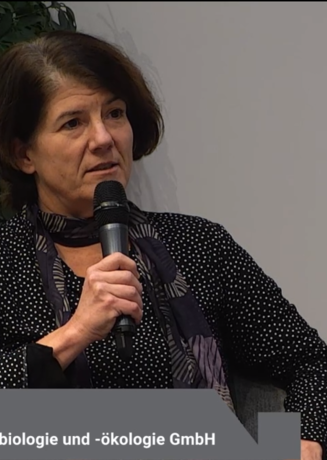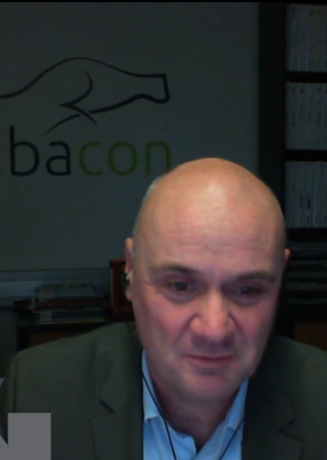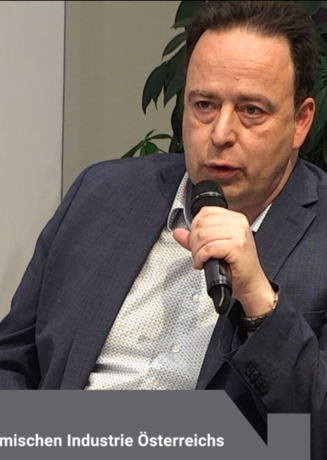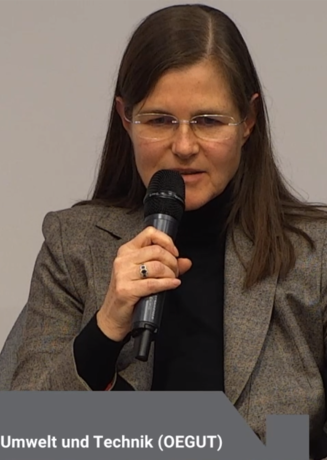5th Annual Conference for Construction
During the 5th Annual Conference for Construction Law and Construction Standards on 29 November 2022, Austrian Standards invited attendees to a facts check. Rising energy and raw material prices, delivery bottlenecks and a lack of skilled workers are affecting the entire construction sector. Demands in terms of sustainability and digitalisation have never been greater.
The 5th Annual Conference for Construction Law and Construction Standards, moderated by ImmoFokus Editor-in Chief Lisa Grüner, was very well received. More than 300 specialists from the construction industry registered for the digital conference organised by Austrian Standards. The event was run in collaboration with the Construction Agency of the Austrian Economic Chamber, the Chamber of Civil Engineers for Vienna, Lower Austria and Burgenland and ImmoFokus.
The three dimensions of sustainability
Eva Bacher, Senior Consultant at Delta Projektconsult GmbH, and Wolfgang Kradischnig, CEO of Delta Holding GmbH, kicked off with a presentation on sustainability and its importance to the construction sector. This made it clear that the sector will only be able to live up to the three dimensions of sustainability with integral planning. "The ecological, social and economic dimensions of sustainability also require structures to be viewed as complete systems and not individual components," explained Bacher.
Wolfgang Kradischnig added: "We need to think in life cycles and ultimately require true-cost pricing over the entire lives of buildings, including demolition and the reuse of building materials and parts." Digitalisation, especially BIM, has an important role to play in achieving this. Taking the example of flagship projects such as "The Cradle" in Düsseldorf, Bacher illustrated how digitalisation and sustainability can go hand-in-hand in practice.
Collaborative construction as a model for the future
Christian Andreas Maeder, Head of DESIGN & BUILD Management, pde Integrale Planung GmbH, touched on the benefits of collaborative planning and construction in his keynote speech. Models, like LEAN Construction, Choosing by Advantages (CBA) and Target Value Design (TVD), are pioneering because they permit alliances and don't simply quantify value in monetary terms. Maeder was convinced that alliances in turn result in fewer interfaces, more efficient work and an "overcoming of spheres". By way of conclusion, Maeder said "Yes, we build better when we build collaboratively".
Is the circular economy already running true?
A high-calibre group on the podium then discussed how thinking in life cycles can become a more fixed element of the construction and real estate industry.
Theresia Vogel, Managing Director, Climate and Energy Fund (KLIEN): "We need to heighten awareness amongst operators and owners to ensure that every investment in sustainability is an investment in the future. I'm sure that we are still going to see many innovations in the industry. The topic of building cooling, for example, is a new field of expertise in Austria. The construction and energy industries are coming closer together all the time. This is where I see plenty of dynamism and lots of new opportunities for the construction industry."
Robert Stadler, Building Physics Consultant, Austrian Institute of Construction Engineering (OIB), was fully aware that the wheels of policy and bureaucracy turn more slowly than desired, and reported: "For example, I am not assuming that the draft for the new Construction Products Regulation at EU level will be passed as planned. However, it has been a long time since sustainability was a such a strong consideration as it is today. It is going to take some time before life cycle mentality penetrates into the awareness of every stakeholder."
Helmut Schöberl, Managing Director, Schöberl & Pöll GmbH – Building Physics and Research, believes that the many different certification systems are hampering the move to a circular economy: "Sustainability certificates for buildings need to be harmonised at EU level. At the moment, the system is very confusing."
Gerald Beck added that: "Certificates and the ability of buildings to be incorporated into taxonomies are also becoming increasingly more expensive for investors. I am certain that CO2 neutrality will be a requirement for planning permission to be granted in the future. This will require harmonised certificates and methods of calculation. Sustainability must also be calculated. We need incentives and benefits in order to win over stakeholders."
Peter Maydl: "In terms of taxonomy, there is still a lot to be clarified, data availability is unsatisfactory and checks are difficult. The level concept would be one approach to solving the issue. In principle, the construction industry is heading in the right direction, but implementation is riddled with pitfalls. The topic has also not gained sufficient traction in educational and training circles."
Huge potential in existing building stock
Another interesting round table addressed the question of: "How do we make the existing building stock fit for future climates?"
Astrid Huber-Reichl, Departmental Manager at the Information and Advanced Training Centre, Federal Monuments Office (BDA), highlighted that historical buildings were built with sustainability in mind. They were made from local, natural materials like timber or lime, and are still being used hundreds of years after they were built. "Of course, we can and must optimise these buildings too. But many of the methods and technologies deployed in historical building stock provide the best examples of sustainable building. We need to work sustainably, with materials and components, which can be maintained and repaired."
Peter Bauer, Deputy Chair of the Engineer Consultants Section of the Chamber of Civil Engineers for Vienna, Lower Austria and Burgenland, reflected: "The renovation of existing buildings is a key issue. If we want to be climate-neutral by 2040, we also need new legislation to speed up renovation work. One example would be in tenancy law so that tenants can insulate interior spaces. We also need to think in clusters and work on generic solutions if we want to achieve the energy transition."
Ernst Rainer, State Authorised and Certified Civil Engineer, Ernst RAINER – Büro für resiliente Raum- und Stadtentwicklung e.U., was convinced: "The major challenges can only be solved by working across disciplines. Here in Austria, our applied research is very innovative. We have a lot of solutions. But we need a district-level approach and to get away from looking at just one property at a time. What has been missing in Austria for decades is a programme promoting urban development as they have in Germany."
Jutta Kraus, Austrian Ministry of Climate Action, Environment, Energy, Mobility, Innovation and Technology: "Circularity must be included in planning from the outset. Both in new builds and renovations. And, we must be able to gauge objectives and actions. The EU's new waste regulation lays down clear bans on landfill, so the problem is being addressed the wrong way round. Planners need to be involved in how construction materials can be reused and disposed of right from the start."
The property market remains tense
In his keynote speech, Herwig Pernsteiner, Chair of the Board, ISG Housing Association, then talked about the trends for construction prices in Austria. He explained several terms and indices, such as the building costs index, build price index and fundamental price indicator. He is certain that: "The property market remains tense. A balance must continue to be met at all times between the different criteria of ecological, social, economical and affordable."
Paul Kubeczko, Managing Director, Association of Austrian Concrete and Prefabricated Components Factories (VÖB), provided an overview of the sustainability of construction products, taking the example of concrete. "The framework conditions are clear, the need is evident and the political will is in place. The 2011 Construction Products Regulation governs the legal framework. The draft of a revised version is currently going through the European Parliament. Normative standards also provide important orientation and stipulate minimum standards. Now we just need to heighten awareness and improve further education and training."
New rules of the game for construction products?
To close, another round table discussed the influence of the new European Construction Products Regulation and how this will change the rules of the game for the construction industry.
Hildegund Figl, Researcher, Board Member, Austrian Institute for Organic and Sustainable Architecture (BBI), doubted that the draft of the revised Construction Products Regulation will meet the necessary sustainability objectives. "There is no description of structural design and there is no regulation of burden of proof. The objectives are good but implementation is questionable."
Otto Handle, Managing Director, Inndata Datentechnik GmbH, agreed: "I would sign up to the goals in an instant., but there is potential for improvement in how we get there. The draft is too cluttered, the measures too elaborate. We certainly need more pragmatism."
Dieter Lechner, Deputy Director, Association of the Austrian Wood Industries, added: "A complex and impenetrable system has been created. But what we need are practical and clear specifications for the industry."
Roland Zipfel, Construction Engineering and Law Consultant, Association of the Austrian Stone and Ceramic Industries, reinforced this view: "The average life cycle specifications required cannot be made across the board because they are always dependent on the installation conditions. When it comes to using recycled materials, the draft takes no consideration of whether these materials are available locally or not. That components should be dismantlable is certainly the right approach but it's a job for planners. At least in some instances, rules on dismantlable components are out of place in the Construction Products Regulation."
Franziska Trebut, Division Manager for Energy, Innovative Construction and Green Matters, Austrian Society for the Environment and Technology (OEGUT), believed: "We need to create incentives and provide grants. The manufacturers are very aware of how innovation works: it is questionable whether we need a regulation for it. Existing databases are very useful in practice, for example. Given the linguistic barriers and different building cultures, I do not however believe that harmonisation at European level is possible."
There are opportunities in every crisis
By the close, the attendees broadly agreed that smart ideas and concepts are still needed to get the circular economy up and running. There was a sense that the new challenges in the construction sector don't just represent obstacles for young architects, planners and smart investors, but that they also open up new routes, perspectives and opportunities.
More on the topic
The 5th Annual Conference for Construction Law and Construction Standards was held on 29 November 2022 as part of the "Austrian Construction Dialogue Board – Working together for clear and simple building rules" project.
The digital specialist conference was recorded – you can view the videos here:
Download presentations
- Kreislauffähiges Bauen – alle Nachhaltigkeitsdimensionen unter einen Bauhelm bringen (PDF – 2.9mb)
Wolfgang Kradischnig, CEO of the Delta Group
Eva Bacher, Senior Consultant, Delta Projektconsult GmbH - Nachhaltig hoch hinaus – planen und bauen wir kollaborativ besser? (PDF – 2.7mb)
Christian Andreas Maeder, Head of DESIGN & BUILD Management, pde Integrale Planung GmbH - Nachhaltigkeitsziele von Bauprodukten – Baupreisentwicklungen (PDF – 1.4mb)
Herwig Pernsteiner, Chairman of the Board, IGS Housing Association - Nachhaltigkeit von Bauprodukten am Beispiel Beton (PDF – 1.6mb)
Paul Kubeczko, Managing Director, Association of Austrian Concrete and Prefabricated Components Factories (VÖB)
More information about the Austrian Construction Dialogue Board


